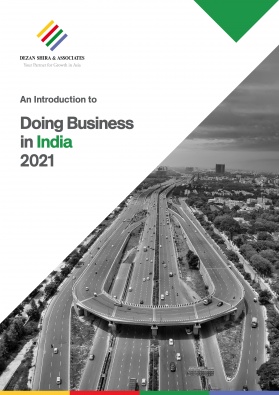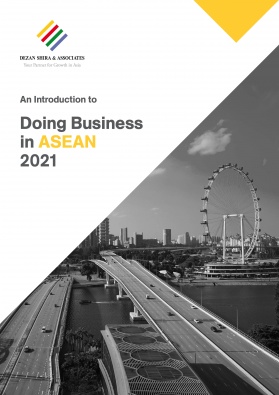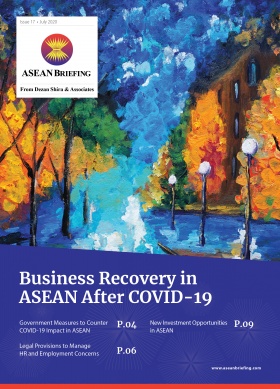India, ASEAN Agree to Review FTA Scope, Address Uneven Market Access
- Trade ministers from India and ASEAN agreed to start discussions on reviewing the scope of the ASEAN-India free trade agreement (AIFTA),10 years since it came into force, to make it simpler, facilitate more benefits for businesses, and streamline customs and regulatory procedures.
- India wants to collaborate with ASEAN to produce generic drugs and medical technologies used for COVID-19 treatment.
- India also sought to clarify that its ‘Atmanirbhar Bharat (self-reliant) initiative’ did not mean a protectionist trade and investment environment. The initiative is aimed at “upscaling the growth of Indian industry”.
The 8th East Asia Summit (Economic Ministers’ Meeting) was held virtually on Friday, followed by the 17th ASEAN-India Economic Ministers Consultations on August 29. India’s Commerce and Industry Minister Piyush Goyal and Tran Tuan Anh, Minister of Industry and Trade of Vietnam co-chaired the consultations on Saturday.
As countries around the world deal with the immediate impact of COVID-19 and its long-term economic and healthcare consequences, the India-ASEAN economic dialogue comes at a timely point.
India is the third most affected country in the world and has suffered significant GDP contraction due to multiple and prolonged lockdowns across the country. This is not helped by the fact that the spread of the coronavirus is not homogenous in India with the current increase in infections attributed to rural spread as migrants returned to their home states, and spurts in urban centers due to the gradual resumption of economic activity.Below we spotlight key points from the two days of economic discussion and virtual dialogue between India, ASEAN, and participating Asia-Pacific countries.
ASEAN-India FTA – review scope, address uneven market access, and China factor
Ten years since its FTA with the Southeast Asian bloc came into effect, India asked the region’s trade ministers to review the scope of the trade agreement.
The Association of Southeast Asian Nations (ASEAN) consists of Brunei, Cambodia, Indonesia, Laos, Malaysia, Myanmar, Philippines, Singapore, Thailand, and Vietnam. The ASEAN–India Trade in Goods Agreement (AITIGA), came into effect in January 2010.
The official statement released on Sunday stated: “The ministers from India and ASEAN countries instructed the senior officials to start the discussions to determine the scope of the review at the earliest to, inter-alia, make the free trade agreement more user-friendly, simple, and trade facilitative for businesses.”
Chief among India’s concerns is that Indian exporters have been denied a level playing field in the Southeast Asian market. Moreover, New Delhi believes that China has taken undue advantage of the ASEAN-India FTA (AIFTA) due to weak rules of origin.
India’s exports to ASEAN in 2019-20 were worth US$31.49 billion while its imports from the bloc reached US$55.37 billion. According to a November 2019 report by the Ph.D. Chamber of Commerce and Industry, India’s merchandise exports to ASEAN increased from US$23 billion in 2010 to US$36 billion in 2018 at a compound annual growth rate (CAGR) of about five percent, while its merchandise imports from the 10-member bloc increased from US$30 billion in 2010 to US$57 billion in 2018, thereby showing a CAGR of about eight percent.
One of the barriers to increased trade is ASEAN’s tariffs barriers. According to reporting from the Times of India, while India has offered Indonesia lower customs duty on nearly 75 percent of its products, Indonesia had lowered duties on only 50 percent of Indian exports. India is also treated differently in the ASEAN market when compared to other regional neighbors who have an economic agreement with the regional grouping; for example, Japanese car imports face a five percent duty in Thailand and Indonesia while a 35 percent tariff is imposed on Indian automobiles. Similar tariff discrimination is observed on Indian rice exports when compared to treatment enjoyed by intra-ASEAN traders.
In terms of the rules of origin, the discussion will be underway among trade officials. The current AIFTA framework calls for a 35 percent minimum value addition in one of the ASEAN countries to qualify for FTA treatment in India. India fears that this has been misused by China-based manufacturers to benefit from tariff relaxations via a third country that is part of the FTA while India is deprived of even reciprocal market access.
New Delhi is currently examining India’s market exposure to Chinese trade and investment – with government vetting now mandatory for foreign direct investment (FDI) from China. India has also banned several applications created by Chinese tech firms, citing security concerns.
India hopes the FTA review will start in earnest before the end of this year. The ASEAN-India Leaders’ Summit is scheduled to be held in November 2020.
Make in India – collaborate with ASEAN to produce generic drugs, medical devices
India is eager to collaborate with ASEAN members to produce generic drugs and medical technology to be used for the treatment of COVID-19.
India is the largest provider of generic medicines globally – it has a 20 percent share in global supply by volume and supplies 62 percent of the global demand for vaccines. India is ranked third worldwide for production by volume and 10th by value.
The country also has the fourth largest medical devices industry in Asia and is among the top 30 globally. India’s pharmaceutical industry (including devices) is valued at about US$41 billion.
Highlighting India’s role in providing pandemic relief, commerce minister Piyush Goyal said that it had provided medical assistance, “in the form of essential drugs, test kits, and protection gear to over 150 countries and as grants-in-aid to over 80 countries.”
Under the Production Linked Incentive (PLI) scheme for promoting domestic manufacturing of medical devices, a five percent incentive will be provided on incremental sales (over base year financial year 2019-20) of medical devices manufactured in India. The incentives under the scheme will be offered for a period of five years from FY2020-21 to FY2025-26. The applicant companies will be required to meet minimum thresholds of investment and production and meet the eligibility criteria to receive incentives under the scheme.
Government measures to promote India’s pharmaceutical sector are:
- Production Linked Incentive (PLI) Scheme for promotion of domestic manufacturing of bulk drugs (key starting materials (KSMs)/ drug intermediates (DIs)/ active pharmaceutical ingredients (APIs)); and
- Promotion of Bulk Drug Parks.
RCEP – path to Indian membership still open till November
Late last week, the 15 Regional Comprehensive Economic Partnership (RCEP) participating countries (ASEAN plus five Asia-Pacific countries of Australia, New Zealand, China, Japan, and South Korea) reaffirmed their commitment to signing the RCEP agreement by November this year.
They have, however, kept the door open to India to return to the negotiating table till then.
The RCEP had held its 8th Trade Ministerial meeting on August 27 via video conference with delegates from Australia, China, Japan, South Korea, and New Zealand. Since the start of the year, the RCEP Trade Negotiating Committee (TNC) has held a meeting in Indonesia in February, followed by three rounds of negotiations (29th to 31st rounds) through video conferences as well as two ministerial meetings. India has not participated in any of these periodic meetings after declining to join the group last November due to irreconcilable differences over securing market access for goods and services.
The RCEP’s population is around 3.6 billion people or 48.1 percent of the world total. In 2019, the combined GDP of the grouping was worth more than US$28.5 trillion or around 32.7 percent of the global GDP.
Regional supply chains – EAS participants commit to improving resilience
The East Asia Summit (EAS) is an annual regional forum that involves the 10 members of ASEAN and eight other countries – Australia, China, India, Japan, New Zealand, Russia, South Korea, and the USA.
As per media reports, ASEAN merchandise trade with non-ASEAN members who are part of the EAS, amounted to US$1.3 trillion in 2019, accounting for 48.1 percent of ASEAN’s total trade while FDI reached US$61.2 billion or 38.1 percent of ASEAN’s total FDI inflow.
This year’s summit took place virtually and saw India agree to the need to strengthen regional supply chains to make them less vulnerable to shocks and transition to a sustainable model of economic growth.
This included an affirmation to promote trade and investment, minimize trade and supply disruptions and ease connectivity, especially for essential goods like medical supplies, medicines and vaccines, food, and other essential supplies and services in the region, in compliance with World Trade Organization (WTO) rules. Towards this goal, the ASEAN Digital Integration Index, which will indicate the readiness level for an integrated digital economy among ASEAN members, has been finalized.
Moreover, over the last few weeks, India, Japan, and Australia have begun discussing the launch of a trilateral Supply Chain Resilience Initiative (SCRI) to reduce dependency on China.
About Us
ASEAN Briefing is produced by Dezan Shira & Associates. The firm assists foreign investors throughout Asia and maintains offices throughout ASEAN, including in Singapore, Hanoi, Ho Chi Minh City, and Da Nang in Vietnam in addition to Batam and Jakarta, in Indonesia. We also have partner firms in Malaysia, Bangladesh, the Philippines, and Thailand as well as our practices in China and India. Please contact us at asia@dezshira.com or visit our website at www.dezshira.com.
- Previous Article Myanmar’s Prospects for Post-Coup Foreign Trade & Investment
- Next Article Relocating Or Exiting Your Business From Myanmar








